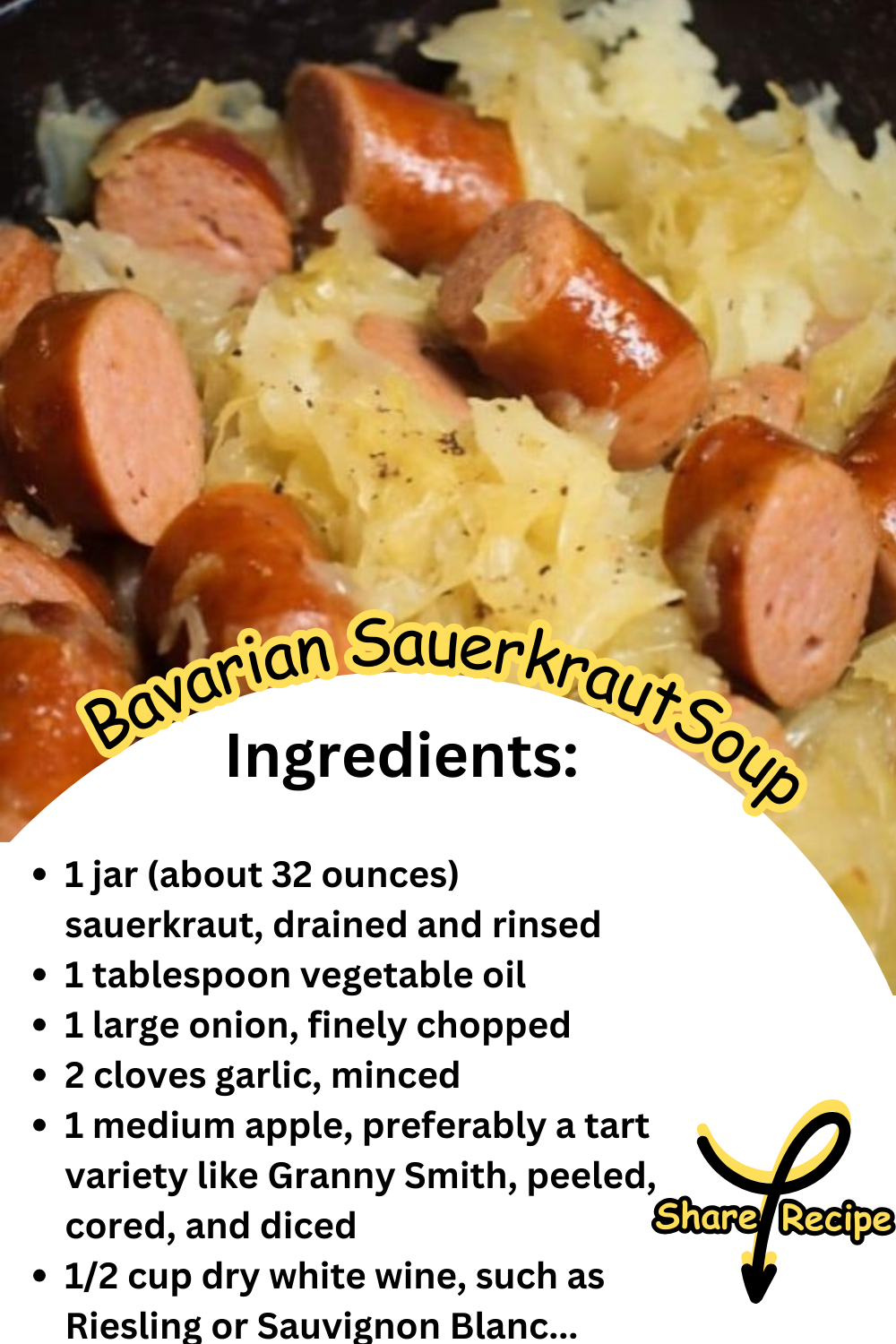
Embarking on a culinary journey to the heart of Bavaria, we find ourselves enveloped in the rich tapestry of German cuisine, where hearty flavors and time-honored traditions create dishes that are both comforting and deeply satisfying. Among these, Bavarian Sauerkraut stands out as a quintessential side dish that captures the essence of German culinary artistry. This recipe, rooted in centuries-old practices, brings the humble cabbage to life, transforming it through fermentation into a tangy, flavorful sauerkraut that’s further enriched with a symphony of spices and ingredients, offering a taste that’s both complex and inviting.
The process of making Bavarian Sauerkraut is as much about patience and care as it is about the ingredients themselves. Starting with a jar of sauerkraut, meticulously drained and rinsed, each step is designed to layer flavors, from the sweetness of apples and the depth of onions to the aromatic lift of caraway seeds and juniper berries. The addition of dry white wine and a slow simmering process allows these ingredients to meld together, creating a dish that’s rich in history and flavor. It’s a testament to the power of simple ingredients, coming together to create something that’s far greater than the sum of its parts.
This Bavarian Sauerkraut recipe is more than just a side dish; it’s a bridge to the Bavarian culture, inviting those who partake to experience a piece of Germany’s culinary heritage. Whether served alongside sausages, pork chops, or enjoyed on its own, it promises a delightful taste adventure. With each bite, one can imagine the bustling German markets, the lively beer gardens, and the warm, welcoming kitchens where such recipes have been passed down through generations. Let this Bavarian Sauerkraut be your culinary companion, enriching your table with flavors that speak of tradition, craftsmanship, and the joy of shared meals.
Ingredients:
- 1 jar (about 32 ounces) sauerkraut, drained and rinsed
- 1 tablespoon vegetable oil
- 1 large onion, finely chopped
- 2 cloves garlic, minced
- 1 medium apple, preferably a tart variety like Granny Smith, peeled, cored, and diced
- 1/2 cup dry white wine, such as Riesling or Sauvignon Blanc
- 1 bay leaf
- 5 juniper berries (optional, but recommended for authenticity)
- 1 teaspoon caraway seeds
- 1 teaspoon sugar (adjust according to taste)
- Salt and freshly ground black pepper, to taste
- 1 cup chicken or vegetable broth (homemade or high-quality store-bought)
- 2 tablespoons unsalted butter (optional, for added richness)
How To Make Bavarian Sauerkraut:
Step 1: Prepare the Sauerkraut
- Drain the sauerkraut in a colander, then rinse thoroughly under cold running water to remove excess brine. Squeeze out the excess liquid by pressing the sauerkraut against the sides of the colander or wrapping it in a clean kitchen towel and twisting.
Step 2: Sauté Aromatics
- Heat the vegetable oil in a large, heavy-bottomed pot or Dutch oven over medium heat. Add the finely chopped onion and sauté until translucent and soft, about 3-5 minutes, to build a flavor base.
- Stir in the minced garlic and diced apple, continuing to cook for another 2-3 minutes. The apple adds a subtle sweetness that balances the tanginess of the sauerkraut.
Step 3: Incorporate Sauerkraut
- Add the prepared sauerkraut to the pot, stirring it in with the aromatics to ensure even distribution of flavors.
Step 4: Add Seasonings and Liquids
- Deglaze the pot with the dry white wine, scraping up any browned bits from the bottom of the pot for extra flavor.
- Add the bay leaf, optional juniper berries, caraway seeds, and sugar. Season with salt and freshly ground black pepper to taste. The caraway seeds and juniper berries introduce classic German flavors.
- Pour in the chicken or vegetable broth, enough to mostly submerge the sauerkraut.
Step 5: Simmer
- Bring the mixture to a gentle simmer, then reduce the heat to low. Cover the pot and let it simmer slowly for 30-40 minutes. This slow cooking process melds the flavors together and softens the sauerkraut.
Step 6: Final Touches
- If using, stir in the unsalted butter towards the end of cooking for a luxurious finish. Adjust the seasoning with additional salt and pepper if necessary.
Step 7: Serve
- Remove the bay leaf and juniper berries (if used) before serving. Present the Bavarian sauerkraut hot as a side dish, ideally alongside German favorites such as sausages, pork chops, or roasted meats.
Additional Tips:
- Flavor Variation: Consider using bacon fat in place of vegetable oil for a smokier taste. Render diced bacon until crisp, remove the bacon bits, and use the rendered fat to sauté the onions.
- Sweetness Adjustment: Taste the sauerkraut after simmering and adjust the sweetness if needed. A little extra sugar can help balance the acidity if desired.
- Pairing: This dish goes well with robust German beers or a glass of dry white wine, enhancing the overall dining experience.
Enjoy crafting this Bavarian Sauerkraut, a dish that promises to transport you to the heart of German cuisine with its rich, tangy flavors and aromatic spices.
Leave a Comment